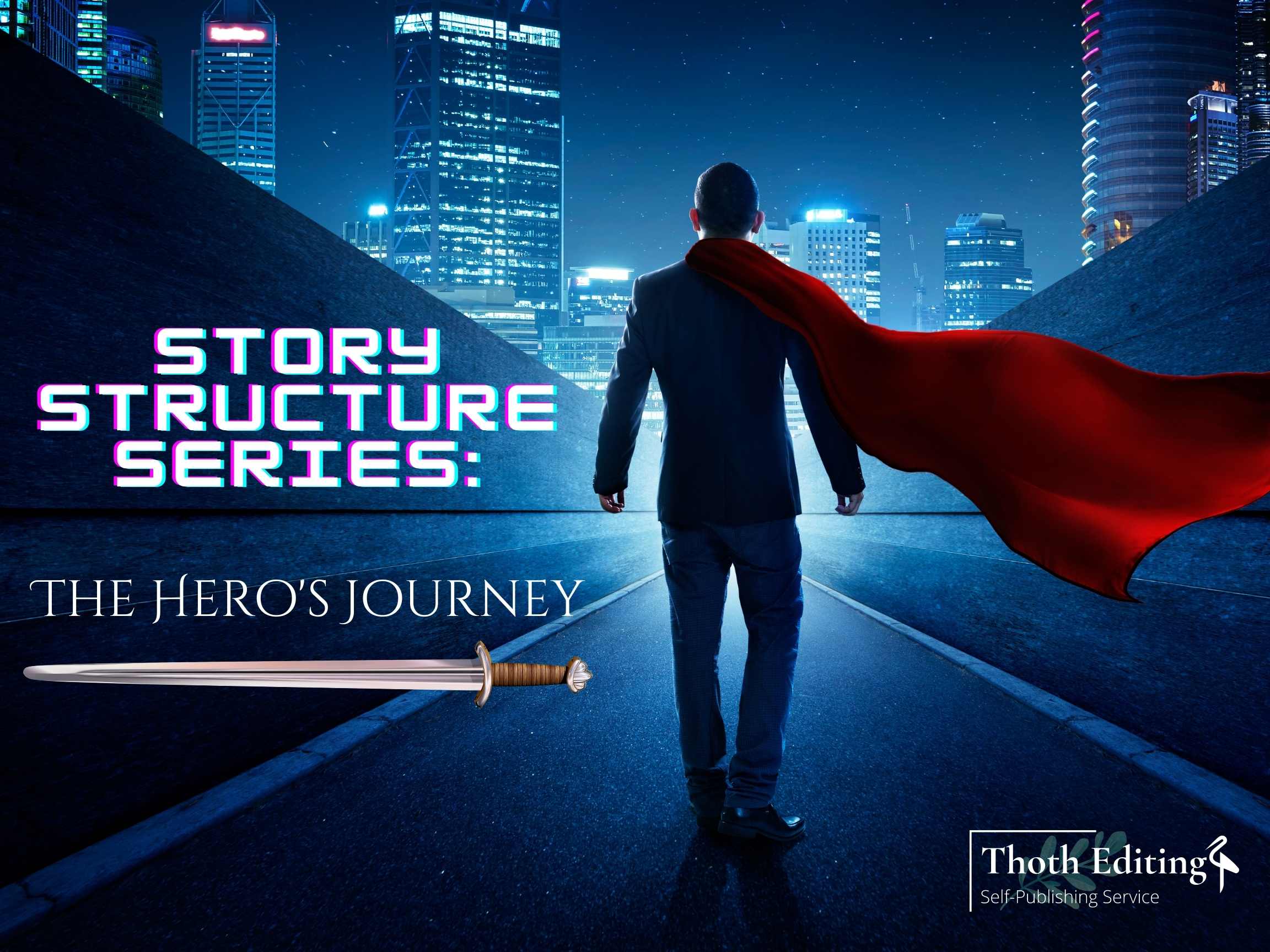For centuries, The Hero’s Journey has shaped how stories have been told. You can find this type of story structure in movies, books, and even video games! I want to take you on a journey through how this story structure came about, how it applies to your writing process, and how you can use it in your own work! Ready to answer the call of adventure?

What is the Hero’s Journey?
The Hero’s Journey, or the monomyth, is simply the story of how a character faces adversity and hardship while attempting to accomplish a task, only to emerge triumphant before returning home, forever changed. (Hercules, anyone?)
If the Hero’s Journey has been around forever, who coined it?
As with many great storytelling elements, the Hero’s Journey came to life through the mind of Joseph Campbell. He was a writer, mythologist, and lecturer at Sarah Lawrence College, who began studying how cultures around the world had similar stories that contained certain archetypes. When he compiled his findings in 1949, it became the book The Hero with A Thousand Faces.
Three stages of The Hero’s Journey
Joseph outlined the Hero’s Journey into three stages, know as:
- The Departure Act: the Hero leaves the world they know.
- The Initiation Act: the Hero ventures into the unknown and is transformed into a true champion by undergoing various trials and challenges.
- The Return Act: the Hero returns triumphant, forever changed.
Think about any of your childhood favorite movies (The Lion King, Harry Potter, Star Wars, LoTR…). They all have a central theme: the main character is thrust into an impossible scenario where they have no choice but to sink or swim. In 2007, a screenwriter named Christopher Vogler created a how-to guide of sorts, aptly titled The Writer’s Journey. It was modeled after Campbell’s work and is used by many scriptwriters today to break down how movies are made.
As with other story structures, you don’t have to follow The Hero’s Journey step for step. Instead, think of it as a map for your novel’s outline. That way, if you don’t know where your story should go next, you can look to your map for directions. Luckily, The Hero’s Journey is a map for character development and plot, so you’ll be covered in both areas.
The 12 steps of Campbell’s adaptation
We’ll also show you how these separate into the three acts as well.
The Departure Act

- The Ordinary World: how the world looks before it changes.
2. Call to Adventure: what or who makes the Hero aware that they need to leave their comfort zone and embark on a journey. It’s usually something external, but for some characters, this might be an internal realization instead of being thrust into another reality.
3. Refusal of the Call: how the Hero reacts to being called on their journey. After all, not everyone would be excited about leaving home and family behind for a life of uncertainty!
4. Meeting with the Mentor: how does the Hero prepare for this journey? If they were born into it (like Harry Potter), then they will already have some kind of background in how to face the challenges ahead. If they were not born into it (like Percy Jackson), then they will need a guide who can prepare them for what is to come.
The Initiation Act
5. Crossing the First Threshold: how the Hero leaves their world behind and enters a new reality.
6. Tests, Allies, Enemies: how does this journey change how the Hero sees themselves? Are they able to conquer these challenges with help from others or are they alone in this battle? Do they face off against friends turned foe, or is there an internal struggle that needs to be resolved?
7. Approach to the Inmost Cave: how does the Hero learn what they have come here for, whether it’s a physical vessel or an epiphany about how to solve their problems.
8. The Ordeal: how does this quest affect every aspect of your life – physically, mentally, emotionally? Do you need help from others along the way?
9. Reward (seizing the sword): how does this journey change how the Hero sees their world and how they fit in it.
The Return Act
10. The Road Back: your character can’t stay stuck in a time warp forever! Eventually, something will make them want to return home. This is where they have an opportunity to share all that they’ve learned with others who are still in the ordinary world.
11. Resurrection: how does this new perspective affect how they see themselves, others, and their life’s mission?
12. Return with the Elixir: how has your character changed since embarking on this journey? Is there anything that can bring them back to where they started or are they forever different now?
Here’s a handy printable!

Have you used this outline for a novel you’ve written? If so, how’d it go? We’d love to hear from you! Post a comment below.
Looking for a slightly different story structure? Take a look at Save the Cat!
